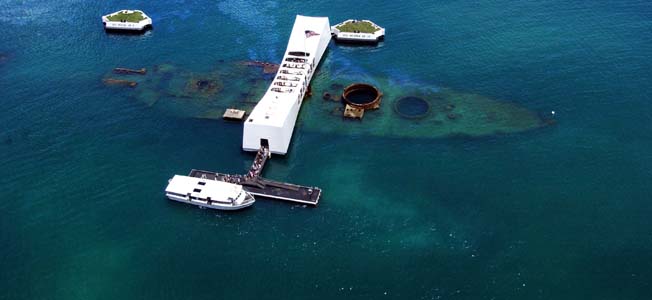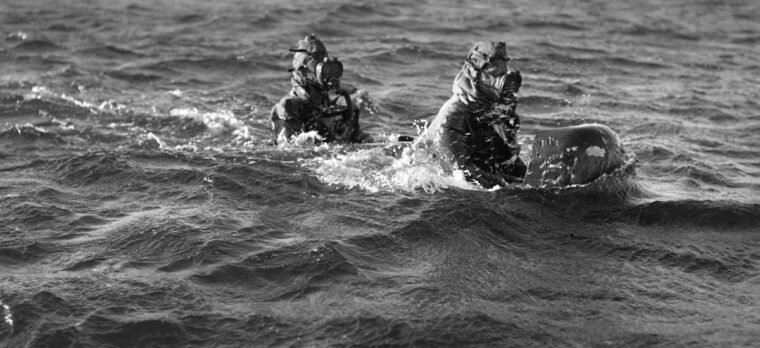
torpedo
The U.S. Navy’s Defective Mark 14 Torpedo
By Mark CarlsonLieutenant Dan Daspit, captain of the U.S. submarine Tinosa could not believe his luck. Framed neatly in the periscope eyepiece was a sitting duck. Read more

torpedo
Lieutenant Dan Daspit, captain of the U.S. submarine Tinosa could not believe his luck. Framed neatly in the periscope eyepiece was a sitting duck. Read more

torpedo
By William F. Floyd, Jr.
Late in the day on October 24, 1944, all of the available 39 patrol torpedo (PT) boats of the U.S. Read more

torpedo
After refueling in the mid-Atlantic and suffering bow damage from being rammed by a tanker, a 769-ton Nazi U-Boat reached its destination, the American East Coast, early on Monday, May 4, 1942. Read more

torpedo
The Japanese Imperial Navy was an elite and elitist organization. As prone at the administrative levels as any large bureaucracy to becoming bogged down in paperwork, careerism, politics, and minutia, the Imperial Navy nevertheless enjoyed a unique dynamic. Read more

torpedo
When the destroyer USS Reuben James (DD-245) was assigned to convoy duty in the North Atlantic in the autumn of 1941, its crew had a sense of foreboding and feared the worst. Read more

torpedo
On August 6, 1942, the men of Maj. Gen. Alexander Vandegrift’s U.S. 1st Marine Division watched from the railings as their troopship, the USS George F. Read more

torpedo
As soon as Colonel James Doolittle’s B-25 raid struck Japan in April 1942, Japan sought to wreak revenge on the United States, but by 1944 devastating aerial bombings on Japan by the Americans had become all too regular. Read more

torpedo
When it came to advanced military technology in World War II, arguably no one was better at it than Nazi Germany, whose scientists Adolf Hitler keep busy trying to invent the ultimate “super weapon” capable of defeating his enemies. Read more

torpedo
Admiral Soemu Toyoda needed answers. The newly appointed commander in chief of Japan’s Combined Fleet, Toyoda found himself facing several unpleasant facts. Read more

torpedo
Able Seaman John Jeffcott, 27, of the HMS Jervis Bay was apprehensive in October 1940 as his ship sailed from Hailfax, Nova Scotia. Read more

torpedo
From an altitude of 30,000 feet, the swift Japanese reconnaissance aircraft flew high over Saipan and Tinian, photographing the brisk and extensive engineering effort under way on the American airfields far below. Read more

torpedo
By Christmas 1941, Robert Hunt, torpedoman on the submarine USS Tambor, had witnessed the Japanese bombing of Wake Island, had slept in the Tambor’s forward torpedo room on the way back to Pearl with a bomb-induced leak bubbling in the corner, and had stood on his sub’s bow and seen the devastation of Battleship Row as debris in the oil-slicked harbor bumped against the hull. Read more

torpedo
Hedy Lamarr was the most beautiful actress of her generation, a celluloid diva who was the epitome of Hollywood glamour, sensuality, and sophistication. Read more

torpedo
When she went to the bottom of the sea at the height of the greatest naval battle in history, the USS Gambier Bay (CVE 73) became a legend for heroism and as the only U.S. Read more

torpedo
It’s now been 74 years to the day since the Japanese attack on Pearl Harbor, and America’s foray into the the Second World War. Read more

torpedo
The two types of aircraft responsible for sinking the Prince Of Wales and Repulse represented the best of Japanese aviation in 1941. Read more

torpedo
On a dark night in September 1941, moving at periscope depth, an Italian submarine edged into Gibraltar Bay near the British harbor. Read more

torpedo
The mighty invasion armada for the main thrust at Luzon in the Philippine Islands was being assembled on December 28, 1944. Read more

torpedo
The haggard American sailors aboard the limping cruiser hoped that the journey upon which they had just embarked was the long-expected voyage back to the United States. Read more

torpedo
She was a tiny vessel, not really designed for the dangers and hardships of war in far places and deep waters. Read more